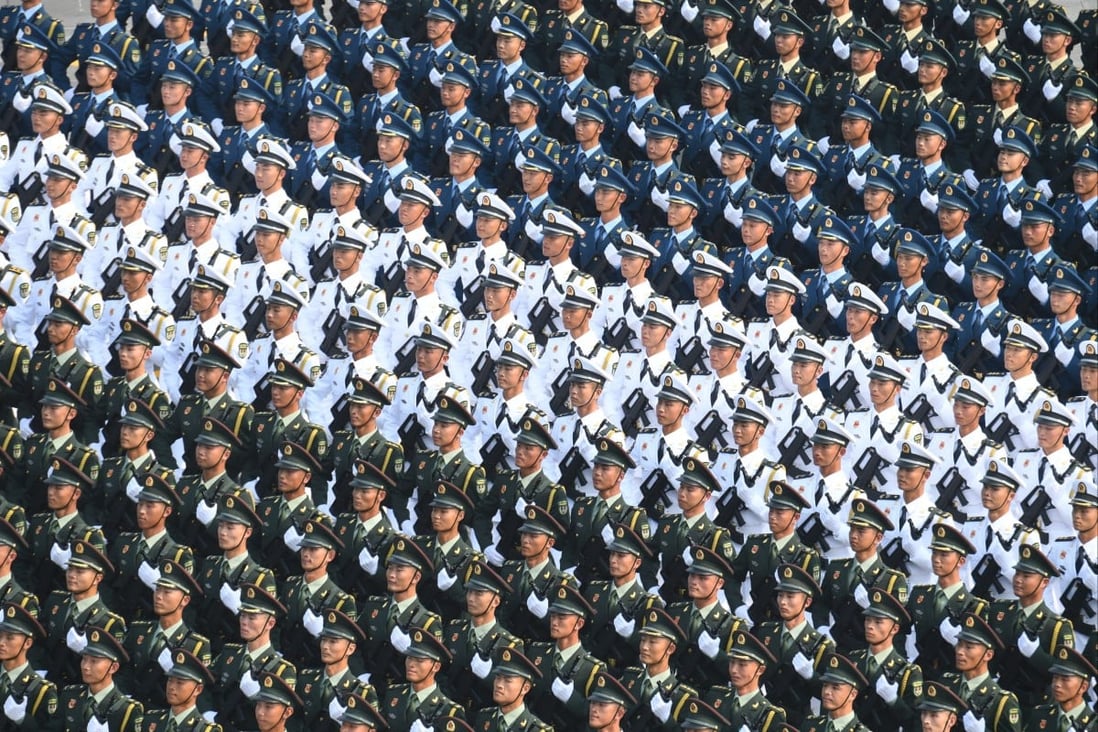https://www.scmp.com/news/china/military/article/3157671/which-chinese-military-units-are-expanding-while-others-are?module=lead_hero_story&pgtype=homepage
Which Chinese military units are expanding while others are shedding troops?
- The PLA is pivoting to confront changing challenges – and that means more combat personnel, according to one commentator
- But much more needs to be done to realise the armed forces’ modernisation ambitions, author says
China has expanded its combat forces to adapt to changing risks – despite a years-long push to streamline the People’s Liberation Army, according a Communist Party publication.
In a book of commentaries published in mid-November by party mouthpiece People’s Daily, military commentator Zhong Xin said the PLA had been “optimising” its personnel structure by deploying more troops to combat roles while cutting 300,000 positions.
The book focuses on President Xi Jinping’s reforms over the last decade and in it Zhong said the military now had about 2 million personnel, down from a peak of more than 6 million in the midst of the Korean war in the 1950s.
When Xi, who also heads the Central Military Commission, introduced a military modernisation plan in 2015, that number had already decreased to 2.3 million as a result of a series of overhauls.
But more work still needs to be done or the PLA’s ambitions will not be realised, according to Zhong.
“The military’s command system is not systematic, the army’s structure is not sound enough, and the policy system lags, seriously limiting the PLA’s defensive operations,” Zhong wrote. “If these problems are not resolved, plans to build a world-class modern military are just empty talk.”
Zhong did not disclose the number of combat personnel but a Chinese military source said resources for 300,000 troops had been allocated to frontline roles to encourage younger professionals to join the PLA.
The source, who spoke on condition of anonymity, said most of the 300,000 positions shed were from non-combat units, including the now defunct general political, general logistics and general armaments departments, the five army groups, as well staff in veterans homes.
The units that gained personnel came under the air force, the rocket force, and the strategic supporting force, among others, the source said.
“The PLA airborne troop units were upgraded from division-level to brigades, while the number of pilots was also increased to support more new-generation fighter jets like the J-20s, J-16s, J-10Cs,” the source said.
State media, including military mouthpiece the PLA Daily, reported earlier that the navy’s marine corps had been expanded to shore up defences of its maritime lifelines.
The South China Morning Post also reported earlier that the PLA planned to expand its marine corps from about 20,000 personnel to 100,000, increasing the number of brigades from two to 10. Some troops would be stationed at ports China operates in Djibouti in the Horn of Africa and Gwadar in southwest Pakistan.
Xi’s goal is to turn the PLA into a modern fighting force by 2027, the PLA’s centennial, and a world-class military on a par with the United States by 2050.
In another essay in the book, Liu Yantong, another military commentator, said risks to China’s security were growing as it came under greater technological, economic and political pressure from a number of other countries. The country’s borders were also unresolved.
“Right now, we are facing the threat of war. The army needs to be urgently aware that a war may happen overnight ... We should be fully prepared and combat ready at all times,” Liu wrote.
Zhou Chenming, a researcher from the Yuan Wang military science and technology think tank in Beijing, said the PLA had been under growing pressure at home and overseas as challenges came from different directions.
“The PLA used to be a traditional ground force-oriented military, but now the country’s overseas interests are expanding, with major security threats coming from the sea, then the air, and even the cyber world,” Zhou said, adding that overhauls to the various combat wings were still under way.
“The Chinese military leadership also feels a strong sense of crisis when dealing with domestic issues. For example, the ongoing ageing problem has affected the PLA’s recruitment.”















Comments